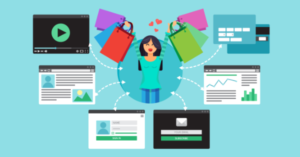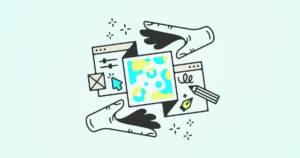How to Master the Habit of Forming Good Habits

Key Takeaways
- Understanding and acknowledging bad habits is crucial for change; premeditating actions and decisions can help avoid falling into negative routines.
- Utilizing digital tools, such as Wunderlist, Quit That!, and Habit List, can help track progress, set reminders, and provide visual representations of habit formation.
- Even after a bad habit is broken, there’s a risk of falling back into it; consistent self-awareness and reminders are key to maintaining good habits.

As human beings, 40% of everything that we do is habitual — from brushing our teeth in the morning to checking our emails as soon as we arrive at the office. According to The European Journal of Social Psychology it takes, on average, 66 days to form a new habit.
Although it only takes a tiny fragment of our lives to break a bad habit and reach better life goals, we often find it very difficult to do so. But why, when the benefits of letting go of bad habits are so obvious?
Succumbing to bad habits can make us feel weak and lack the confidence to try harder, which is why many of us get stuck repeating the same bad habits time and time again. Change can be extremely stressful when you’re used to doing things in a certain way, but changing habits for the better has a lasting positive effect on our lives.
Let’s take a look at some ways that we can forget bad habits and adopt new, better ones.
Why Do We Form Habits?
Neuroscientists have discovered that when certain behaviors become subconsciously automatic, our brain doesn’t have to work as hard. Basically, we form habits so that our brain can slack off for a while! What does this mean? It means that doing something spontaneously out of the ordinary exercises our brain!
(And, of course, breaks the habit momentarily).
Curing Bad Habits by Premeditating Them
Bad habits are usually a result of a decision that we made earlier, like deciding to eat lunch at an establishment that doesn’t cater healthy options. The mistake might not occur to you until the “oh crap” moment when you’re sitting down and reading the menu (“Damn it, I’ve ended up here again, oh well I’ll take the double cheeseburger and fries”). Premeditation is the key, because more often than not bad habits lead to other bad habits ⏤ for example: “Since I’ve been eating so unhealthily today, I may as well have that full sugar Coca Cola and forget about the Coke Zero.” No, no, no.
Noting down bad habits and coming up with viable alternatives will not only help you to dodge them, but will also make it easier to come up with solutions that don’t feel like a form of self-punishment.
Getting in the Habit of Writing Down Bad Habits

In this case, the note might say “Eat something healthy for lunch”. “Don’t eat something unhealthy for lunch” has negative connotations and may induce underlying feelings of shame for your past habits — it really does make a difference to your approach. Positive vibes equal more motivation. If you still find this difficult at first (which is understandable, it’s not supposed to be easy), start off small with a simple “Have water or a sugar-free drink at lunch”, and work your way up to bigger goals.
Noting your habits digitally in a list or to-do app will allow you to take your notes everywhere and set reminders for them.
3 Apps That Will Help You Form Good Habits
Wunderlist is a small but massively useful to-do app for noting down important tasks, deadlines, upcoming events, et cetera. Why not use it to break bad habits? Wunderlist is a fantastic way to remind yourself (via your mobile, tablet or computer) to drink water at certain times in the day, have a healthy breakfast at 7am, or squeeze in a 10-minute brain exercise at 8am for better mental performance during the day (which will also boost your willpower to help fight off bad habits!).
Quit That! is an app that tells you how long it has been since you last did something that you shouldn’t have done. People hate to break their winning streaks, so it’s a perfect way to break nasty habits like smoking. It’s very rewarding seeing that you’ve gone an entire week cigarette-free. It even lets you know how much money you save from breaking these habits, which is always a bonus!
Habit List combines Wunderlist and Quit That. It helps you break your bad habits by letting you know, visually with bar charts, how long you’ve gone without doing them, but also allows you to set reminders (to-do list style) for good habits. The app uses badges as a visual reminder of what habits you have left to perform throughout the day. You can even set yourself a reminder to get in the habit of using the app!
Conclusion

So you’ve finally exterminated a bad habit! But it doesn’t end there, because you never really forget a bad habit and you forever run the risk of falling back into them. Better bookmark this article then, just in case!
By actively reminding yourself about your bad habits, you can bring them to the front of your consciousness and deal with them before it’s too late.
What bad habits have you been carrying around for far too long, or beaten to significantly improve your life?
Frequently Asked Questions on Mastering the Habit of Forming Good Habits
How long does it take to form a good habit?
The time it takes to form a good habit can vary greatly depending on the individual and the habit in question. On average, it takes about 66 days for a new behavior to become automatic. However, it could take anywhere from 18 to 254 days. The key is consistency and patience. It’s important to remember that forming a new habit is a process, not an event.
What are some strategies to help form good habits?
There are several strategies that can help in forming good habits. One effective method is to start small. Begin with a habit that is so easy you can’t say no to it. Another strategy is to increase your habit in very small ways. As you build up, break habits into chunks. If you’re feeling motivated, do more. But on the hard days, it’s okay to stick to the basics.
How can I make my habits stick?
Making habits stick requires consistency and a positive mindset. It’s important to make the habit a part of your identity. For example, if you want to become a writer, start by telling yourself “I am a writer.” Another strategy is to make use of habit stacking, which involves pairing a new habit with an existing one.
Why do I struggle to form good habits?
Struggling to form good habits is a common issue and can be due to a variety of factors. It could be that the habit you’re trying to form is too big or not clearly defined. It could also be due to a lack of motivation or self-discipline. It’s important to identify the root cause of the struggle and address it directly.
Can I form multiple good habits at once?
While it’s possible to work on multiple habits at once, it’s generally more effective to focus on one habit at a time. Trying to form multiple habits at once can be overwhelming and may lead to burnout. Once you’ve successfully formed one habit, you can then move on to the next.
How can I track my habit formation progress?
Tracking your progress can be a powerful tool in habit formation. You can use a habit tracker, which is a simple tool that allows you to record whether or not you completed your habit. This can provide a visual reminder of your progress and help keep you motivated.
What role does willpower play in habit formation?
Willpower plays a significant role in habit formation. It’s the force that helps you resist short-term temptations in order to achieve long-term goals. However, it’s important to note that willpower is like a muscle – it can get tired if you overuse it. Therefore, it’s crucial to use strategies that can help conserve your willpower.
How can I break bad habits while forming good ones?
Breaking bad habits while forming good ones can be challenging but is certainly possible. One strategy is to identify the triggers for your bad habits and try to avoid or replace them. Another strategy is to focus on the benefits of the good habits you’re trying to form, which can help motivate you to stick with them.
Can habits be formed at any age?
Yes, habits can be formed at any age. While it may be easier to form habits during childhood, adults are fully capable of forming new habits. The key is consistency, patience, and a willingness to step out of your comfort zone.
How can I stay motivated when forming new habits?
Staying motivated when forming new habits can be challenging. One strategy is to set clear, achievable goals related to your habit. Another is to reward yourself for reaching milestones. It’s also important to maintain a positive mindset and to remember why you wanted to form the habit in the first place.
I’m a nutritionist and lifestyle blogger at Nomad Noms, currently writing nutrition guides for digital nomads whilst travelling the globe with my husband.



